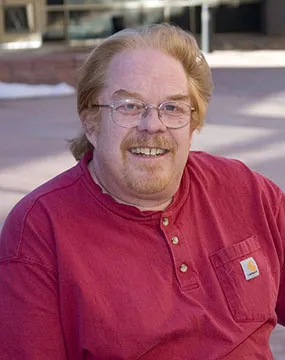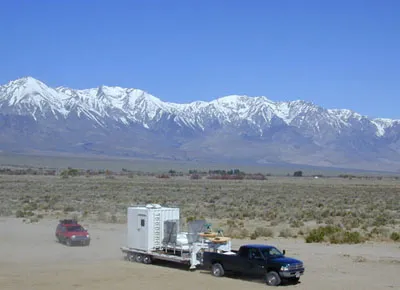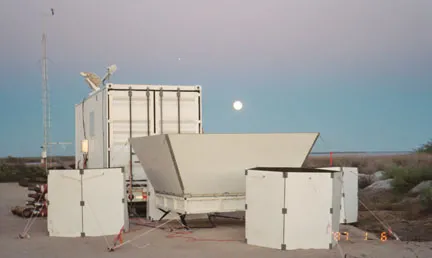Lou Verstraete - Senior Technician
Deploying atmospheric sensors around the world

Lou Verstraete
Carlye Calvin/UCAR
Some scientists aspire to work on experiments in exotic locations. Lou Verstraete didn't have a choice.
"I basically grew up on an NCAR field project," he says.
As a child and young adult, Lou spent two decades in New Zealand, where his father, Marcel, was stationed as an NCAR engineer on a study of high-altitude wind currents. Marcel's appointment was only supposed to last one year, but it ended up lasting 20.
The sojourn had an even more lasting impact on his son. Today, Lou is a second-generation NCAR researcher whose career combines atmospheric science and world travel.
A senior technician in NCAR's Earth Observing Laboratory (EOL), Lou works on a self-contained meteorological observing platform called the Integrated Sounding System. The ISS has four components: a wind profiler radar, a radio acoustic sounding system, a balloon sounding system, and a 10-meter high meteorological tower.
Lou and his colleagues deploy the system on field projects around the country and world to retrieve measurements of temperature, humidity, pressure, wind, solar radiation, and precipitation. During a typical year, his team might participate in three or four major field projects.
"Our job is to look after the various platforms that scientists request for studying different types of weather," he explains. "It's up to us to maintain all the equipment, make sure it's working, get it to the project location, set it up, run it during the project, and keep an eye on data quality. At the end of the project, we pack it up, ship it home, and start all over again."

During field projects that require moving the ISS around to different locations, Lou and colleagues deploy a more mobile version of the system. In the spring of 2006, they used this modified system in California's Owen Valley during the Terrain-induced Rotor Experiment (T-REX), a study of the effect of mountainous terrain on atmospheric currents.
Lou has been on 56 different field projects in his 17 years at NCAR. He usually spends about 100 days in the field each year, in locations that have included China, Australia, Italy, Papua New Guinea, France, the Pacific Islands, Florida, Kansas, Oklahoma, and ships at sea. Later this year, he heads to Chile.
"I enjoy travel, so when the opportunity came to work here, I jumped at it," he says.
In addition to the travel, something else Lou appreciates about his job is the fact that it's never stagnant. "No two days are you doing the same thing," he says. "One day you're working on computers and electronics, and then the next day you might be greasing the axle hubs on a trailer." Or he might find himself outdoors organizing equipment, in the shop working on antennas, or e-mailing colleagues.
Lou's biggest challenge at work is enduring harsh conditions during field projects that take place in extreme weather. "Like when you have to get up in the morning and go out and chip a couple inches of ice off the equipment so it can run," he says. Projects at sea can be a tough, too, since he's not fond of sailing.
Lou lived in Colorado until he was nine years old, when Marcel moved the family to New Zealand. The project Marcel worked on, which focused on high-altitute wind currents, involved launching balloons that circled Earth at various altitudes, collecting wind and temperature data over remote regions.

Lou and colleagues deployed the ISS in Mexico during the North American Monsoon Experiment in 2004. The full-sized version, pictured here, is used during long-term projects when researchers stay in one place. During NAME, the team studied summer rains that fall each year in the southwestern United States and northern Mexico.
"They couldn't do the study over the United States because the balloons would fly into Russian territory, and it was the height of the Cold War," Lou explains. "So they had to pick a place in the southern hemisphere."
New Zealand fit the bill, since NCAR's main sponsor, the National Science Foundation, already had a base in Christchurch for Antarctic research.
Lou helped out on the field project during high school and on his vacations, learning how to launch giant superpressure balloons designed to fly to 78,000 feet and drift on wind currents.
by Nicole Gordon
February 2008